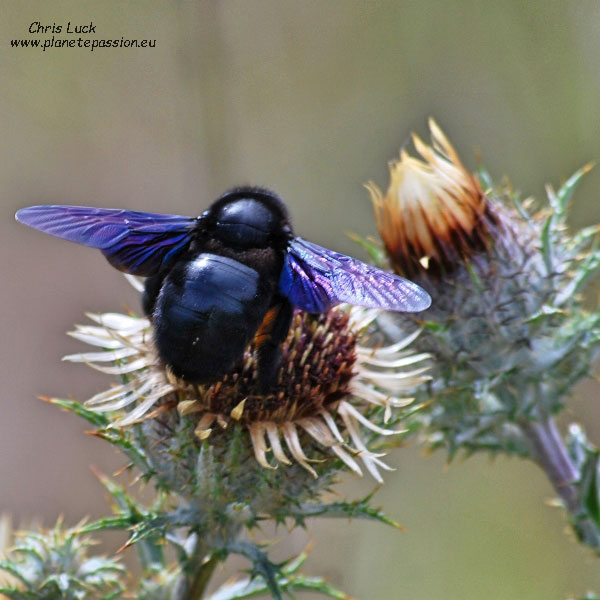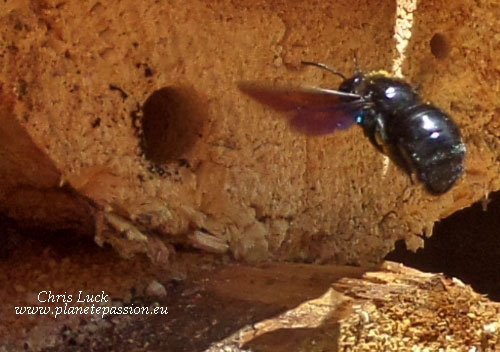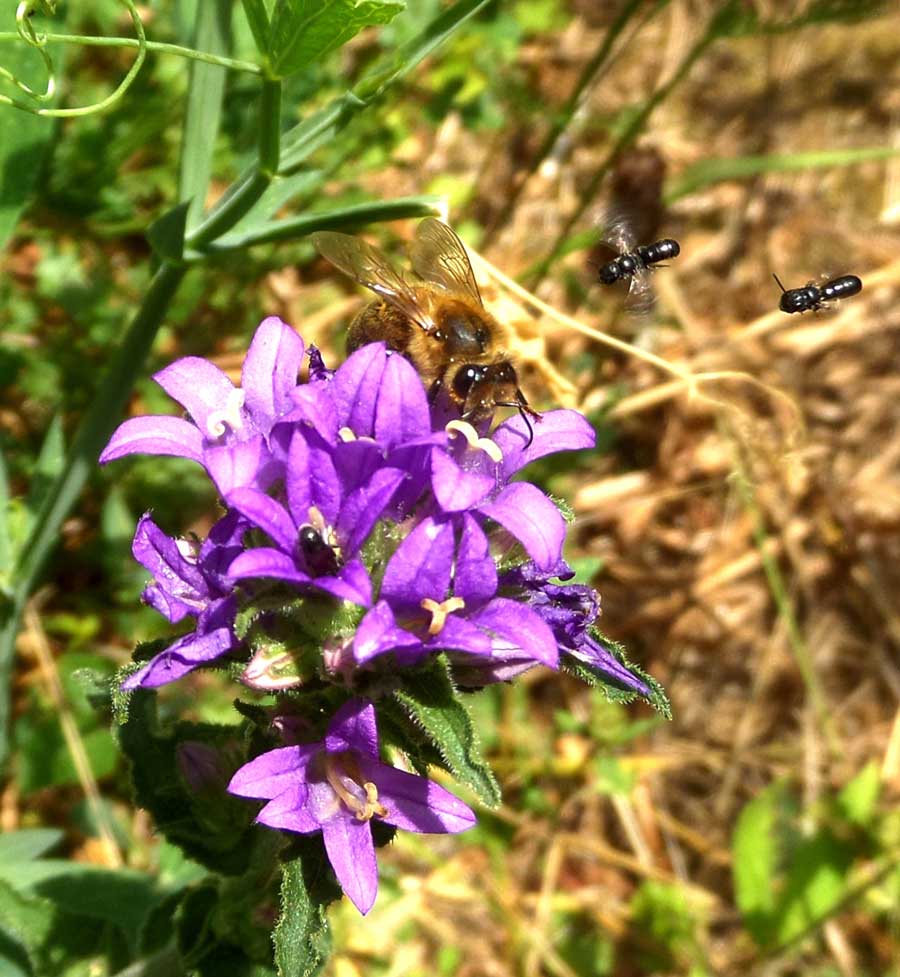Carpenter bees
Abeille charpentiere
Xylocopa violacea & Xylocopa valga
Also given a mention on this page are Xylocopa iris & Xylocopa cantabrita which are two very different species.
The final species covered is the Blue Carpenter Bee - Ceratina cyanea and is the most common of the tiny Ceratina species in France.
Xylocopa violacea and Xylocopa valga
are usually referred to in English as violet carpenter bees and are both types of solitary bees found in southern and central Europe. They are about 25 mm to 30 mm long, glossy black all over with sparse black hairs. The opaque wings are dark brown with a lilac-coloured sheen but how we see them depends on the light.
Reproduction takes place in April / June with males and females that have over-wintered from the previous year.
They will often be seen going in and out of holes
looking for suitable wood in which to make their egg chambers, in doing so they will examine anything that resembles a hole, even in concrete posts, if this happens to be in the gaps in the walls of your stone house you should not be concerned, even in your roof structure there is no problem as they do not like dry, hard, well seasoned wood that is in good condition.
Degraded old logs, dead trees and large branches etc. are the preferred location and frequently an existing hole is used.
The single entry hole leads into multiple galleries
into which the female lays her eggs, each one blocked in with a pellet of pollen which provides nutrition for the larva. As few as 3 and as many as 30 eggs may be laid in a tunnel complex.
The new adults then emerge at the end of summer and over-winter to continue the cycle the following spring.
They are not aggressive and rarely sting.
There are no other insects in France that resemble these bees, therefore there can be no possible confusion.
Conservation advice
Xylocopa iris, (Petit xylocope bleu), is like a smaller version of the above species
Xylocopa cantabrita is a rare species in France
with very few observations in the Var in the South East and in the Pyrénées-Orientales in the South West. A large species it is unlike the others being shades of light brown with wings that lack the metallic reflection.
Present in most of France and in most types of habitat.
Ceratina cyanea, the Blue Carpenter bee is very small between 5 and 9 mm for females and 5 to 7 mm in males and to the casual eye don't really look like a bee. They are part of a family of small Ceratina species that are in France the majority of which are scarce or rare and only found in extremely localised regions. (Species list below). They are a dark blue somewhat metallic colour and are frequently seen hovering around flowers in groups, sometimes in quite large numbers.
They fly from March until October / November taking pollen and nectar from a range of flowers.
Females excavate nesting burrows in dead, dry, broken woody or herbaceous stems in which the pith has been exposed. Bramble is particularly favoured including broken and cut pieces that are on the ground. Once hollowed out the female lays her eggs providing them with regurgitated pollen and nectar. Adults of both sexes over winter also in hollowed out stems and frequently several bees will spend the winter together.
The below photo shows tiny harebell carpenter bees ,Chelostoma campanularum, on Clustered Bellflower. Widespread but often overlooked they visit Campanula flowers and use small holes, usually those that have been been made by small beetles
List Ceratina species in France:
Ceratina callosa, Ceratina chalcites, Ceratina chalybea, Ceratina cucurbitina, Ceratina dallatorreana, Ceratina dentiventris, Ceratina gravidula, Ceratina mocsaryi, Ceratina nigrolabiata, Ceratina parvula.





